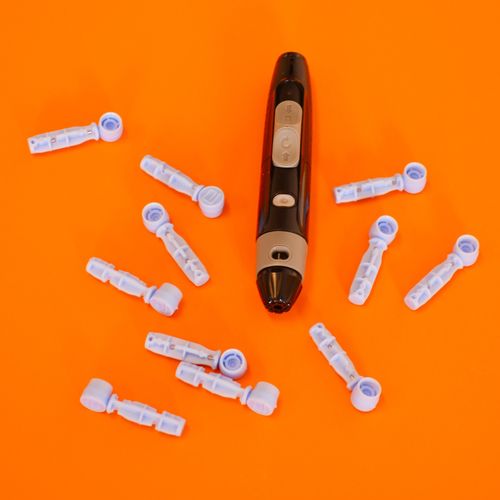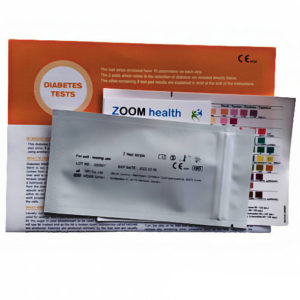Type 1 Diabetes (T1D) is a chronic autoimmune condition where the body’s immune system mistakenly attacks and destroys the insulin-producing beta cells in the pancreas. This results in the body having an inability to produce insulin, which is necessary for controlling blood sugar levels. Without adequate insulin, the body can’t use the glucose present in the bloodstream and the person’s blood sugar levels may become dangerously high, leading to serious health complications.
Type 1 diabetes is most often diagnosed in children and adolescents, although it can occur in adults as well. It is estimated that 1.25 million Americans and more than 400,000 people in the United Kingdom have Type 1 diabetes.
A diabetes test kit for the presence of glucose and ketones in urine and can help identify diabetes at an early stage, before the illness causes any symptoms.
Type 1 diabetes is a hereditary condition, although the exact cause is unknown. It is not the result of diet or lifestyle choices.
Since the body can’t make insulin on its own, people with T1D must rely on external sources of insulin, such as injections or an external insulin pump to regulate their blood sugar levels.
Type 1 Diabetes can be managed with careful monitoring, regular physical activity and a healthy diet. People with T1D must also take insulin, often multiple times a day, to keep their blood sugar levels in a safe range.
It is important to recognise the signs and symptoms of T1D. The most common symptoms are frequent urination, excessive thirst, weight loss, fatigue, blurred vision, irritability, and slow healing wounds. If you or someone you know experiences any of these symptoms, it is important to see a doctor right away.
Blood sugar monitoring is an essential part of managing Type 1 diabetes. A finger prick test is used to measure the amount of glucose in the blood and its level is compared to an acceptable target range. Adjustments to insulin doses, diet and/or exercise must then be made to ensure glucose levels remain within this target range.
If managed correctly, people with T1D can lead normal and healthy lives. There is no known cure for T1D, but research is ongoing and positive advancements are being made. With the right support, knowledge and understanding, people with T1D can lead long and fruitful lives.
Living With Type 1 Diabetes
Receiving a diagnosis of type 1 diabetes can be scary and overwhelming. However, with the right knowledge and tools, many people are able to manage their T1D effectively. Here is some more information on living with type 1 diabetes:
Diet and Meal Planning
- There is no “diabetes diet” but eating healthy, balanced meals is important. Work with a nutritionist or diabetes educator to develop a meal plan that fits your needs and lifestyle.
- Carbohydrates have the biggest impact on blood sugar levels. Monitor your carb intake and aim to be consistent with portions at meals.
- Eat plenty of vegetables, fruits, whole grains, lean protein, and healthy fats like olive oil and avocados. These provide key nutrients.
- Stay hydrated by drinking water or other low/no calorie beverages.
- An RD can also provide guidance on how diet affects blood sugar and insulin needs.
Checking Blood Sugar Levels
- Use a glucose meter to check blood sugar levels multiple times per day. Test when waking up, before meals, 1-2 hours after meals, before bedtime, and with symptoms of high or low blood sugar.
- Keeping a log book to track your results is extremely helpful for spotting patterns and guiding treatment decisions.
- Work with your medical team to determine target blood sugar range, but typical targets are 80-130 mg/dL before meals and under 180 mg/dL after meals.
Insulin Therapy Basics
- Insulin therapy replaces the insulin your body can no longer produce. It is essential for managing T1D.
- Multiple Daily Injections (MDI) or an Insulin Pump are common delivery methods. Use the method that best matches your lifestyle.
- There are several types of insulin that differ by onset, peak time, and duration. Often a combination is needed to mimic natural insulin responses.
- Understand how nutrition, activity, stress levels and other factors impact your insulin needs. Expect frequent adjustment of dosages.
Dealing With High and Low Blood Sugar
- Know the symptoms of high blood sugar (hyperglycemia) and low blood sugar (hypoglycaemia) and how to treat both urgently.
- Have emergency glucagon on hand to treat severely low blood sugar. Educate those around you on how to administer it if needed.
- Prevent exercise-induced hypoglycemia by checking blood sugar frequently before, during, and after physical activity. Adjust insulin and carb intake accordingly.
Reducing Risk of Complications
- Maintaining HbA1c level under 7% greatly reduces the risk of long term complications like kidney/nerve/eye damage, stroke, and heart disease.
- Get a dilated eye exam yearly to check for diabetic retinopathy. Catching it early prevents vision loss.
- Monitor blood pressure and cholesterol levels. Keep numbers in a healthy range through diet, activity and medication if needed.
- Inspect your feet daily. Get prompt treatment for any cuts, blisters or irritation to prevent infections.
While there are certainly challenges with T1D, you can thrive with proper education, monitoring and support. Connect with resources and a community who understands what daily life with type 1 entails. The future is bright for those living actively with T1D.
Photo by Diabetesmagazijn.nl on Unsplash
Zoom Health is a leading UK supplier of Home Health Tests and Earplugs






